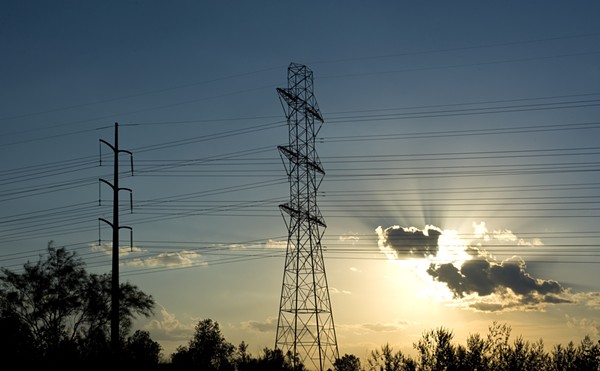
Greg Harman
[email protected]
Having grown up eating fish on the Great Lakes not too terribly long before Superfund gave local fish an unpalatable flavor, Marla Cone was understandably interested in finding the “most contaminated” people on the planet during her time as a reporter for the Los Angeles Times.
Perhaps to lay her mind to rest that she wasn't one of them.
Eventually she found this contaminated demographic in perhaps the least expected locale: the Arctic.
“This seemed to me the worst case of environmental justice on earth,” said Cone, speaking to a small group at Florida Atlantic University in Jupiter.
Prevailing wind and waves pushed the toxics ever higher on the planet, where most of those impacted had never heard of the unpronounceable compounds building up in their tissues thanks to their virtually exclusive diets of top-tier ocean predators.
Not only were the winds against them, but each leap â?? from plankton to fingerling, fingerling to small fish, on up to predatory whales like belugas and narwhales â?? increases the chemical cocktails' concentration by up to 100 fold, Cone said.
This decades-old process became so bad that it is believed that in the 1980s Inuit women's breast milk would have qualified as toxic waste under current U.S. law. The hunting communities were being victimized by the West's production of a variety of toxic contaminates, including flame retardant chemicals.
Of course, this has been reported widely in the years since Cone's book, Silent Snow: The Slow Poisoning of the Arctic, was published in 2005.
It was in the question-and-answer period following the presentation that Cone suggested the root of this ongoing dilemma is our dangerously pro-business value set as demonstrated in the weak Toxic Substances Control Act.
Instead of requiring companies to prove new chemicals safe in the United States, TSCA demands regulatory agencies prove definitively their hazards.
Europe's model, by contrast, generally places the burden of proof on the manufacturer to prove a chemical's safety.
Cone referenced EPA's attempt in 1989 to ban asbestos as an example of the law's failings.
Despite all we know about the negative health impact of asbestos and the lost lives and lawsuits associated with it, asbestos is still legally sold in the U.S.
EPA, you see, was countered in their TSCA effort by the Fifth Circuit Court of Appeals.
Here's the Environmental Working Group on the subject:
“If they're not going to ban asbestos, there's no way they're going to ban BPA,” Cone said. “I think under this administration it's not going to get much better.”
The message of the keynote circled back around to one of our morning speakers, a science policy analyst with the Center for Food Safety who decried the country's lurch into genetically modified agriculture while (again) the European market kept its distance.
It's an enormous and controversial topic, but to give you a sense of where CFS's Bill Freese is coming from, here's his quick take on the Monsanto philosophy: “Every seed that's saved is one less seed that's sold.”
Preceding Freese was Jimmy Daukas, managing director of American Farmland Trust's ag and environment campaign, speaking about my FAVORITE topic, the hobbled U.S. climate bill convulsing in the U.S. House of Representatives.
“We saw more reductions when gas went to four dollars a gallon then we will see, for a long time, under cap-and-trade,” Daukas said.
But my favorite quote of the day came from a fellow journo making the most of this here instituto experience, the knowledge dispensary of which I'm wantonly pilfering.
“In the interests of staying employed for â?? hopefully â?? a few more years, I thought I better `learn more about the environment`. I think environmental reporting is what technology reporting was in the 1990s.”
Yeah, only on this beat, when there's a bust, you can bet it'll be a BEEG one.
Anyway, we're moving on to water management tomorrow and climate change come Wednesday. Storms and wetlands on Thursday. Exactly what sort of tidbits would you have me dredging up for ya, San Antonio?
Make it quick, now. I fly back in five/four days.
Oh, but don't call Friday. That's my snorkel day. Bad reception down thereâ?¦

















